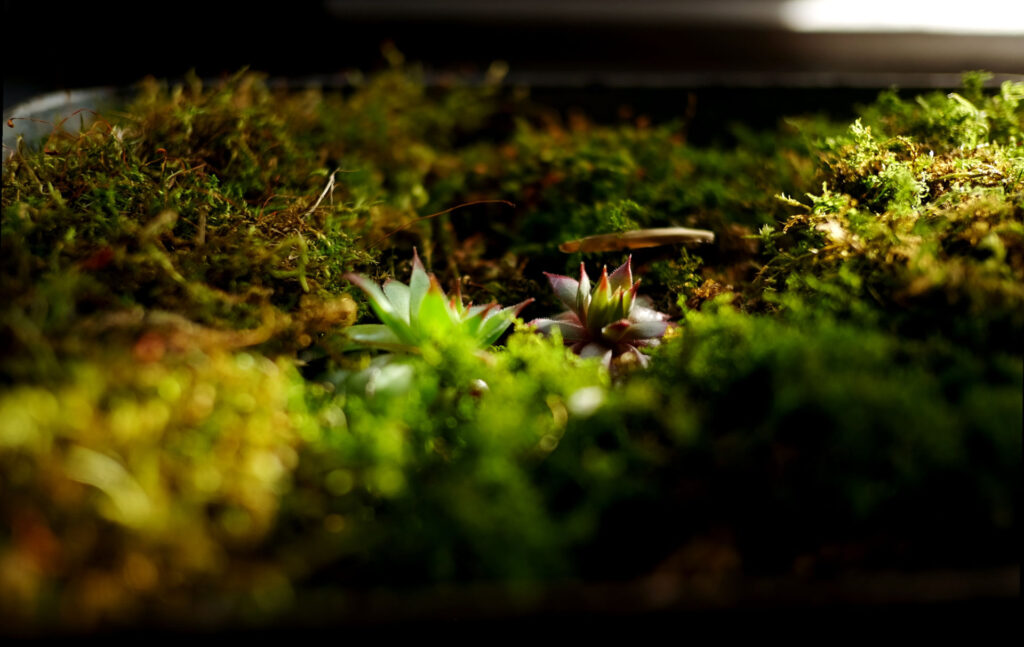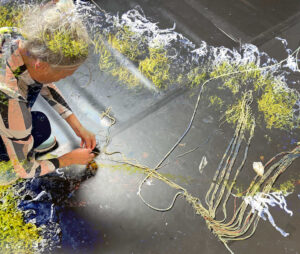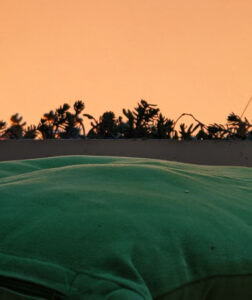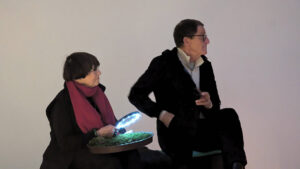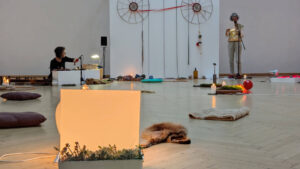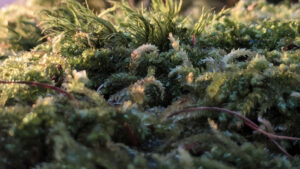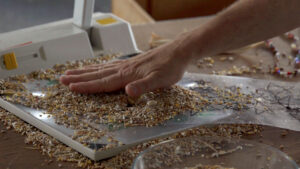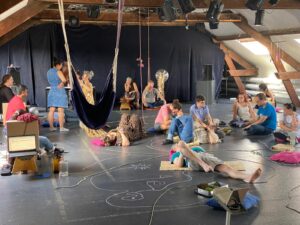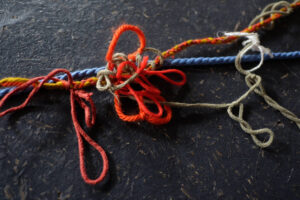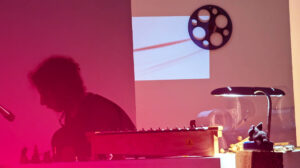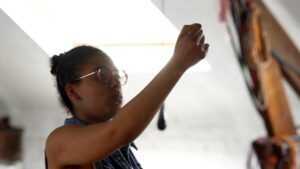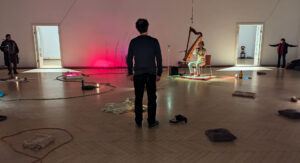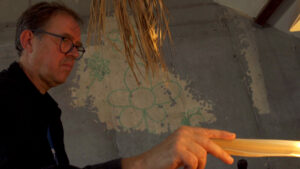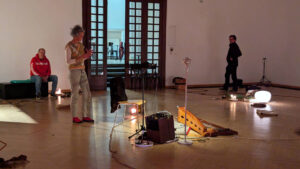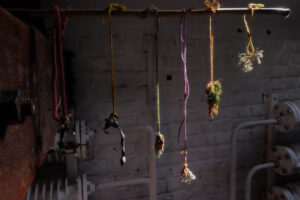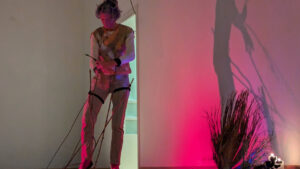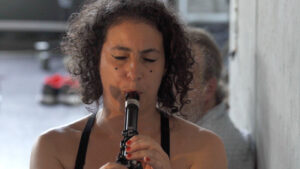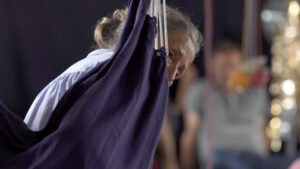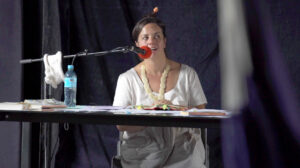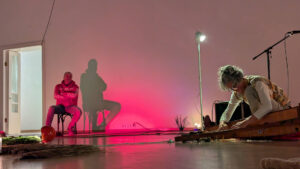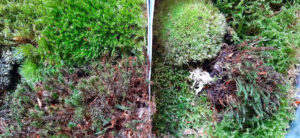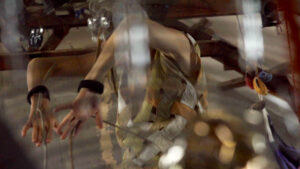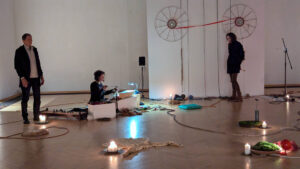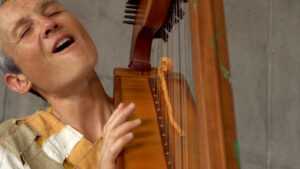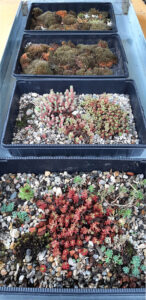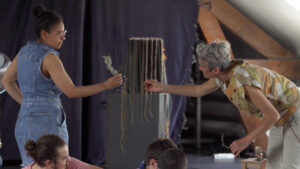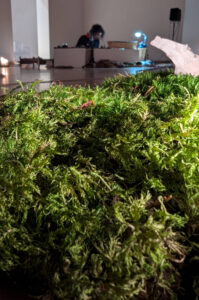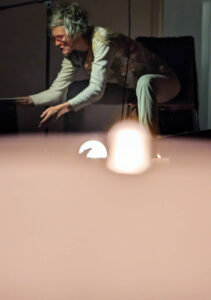welcome to our laboratory! you can take off your shoes, take some socks and sit or lie anywhere you like. there are cushions and comfy fur on the floor, or benches, and a blue hammock seat, where it is possible to hide. feel free to move and change place during the performance!
we will interact with you. if you don’t feel like interacting, please make a clear sign that you want to be left in peace. we explore translations into sounds and gestures of emotional, sensorial and mental states experienced by persons with mental imbalances like the autism spectrum, and observations of the animal and vegetal world. how might complex conversations of species and whole ecosystems sound like? is it possible to come closer to a different way of perceiving? what does a bird hear? can a tree sense a connection to surrounding plants through their roots? how to connect to a living being that is unfamiliar to us?
communication through sound has been a steady center of inquiry, and i still experiment on how to work with vocal expression and sound on a level of interdependence, treating both as compositional elements of a kin fabric. together with a musician, artists and perofrmers with impairments, we elaborate ‘sonic transpositions’, or translations into sound and gestures of the complex conversations of species and whole ecosystems through mycorrhizal networks, on sensorial ways of connecting and on swarm behavior. how to establish connection?
i want to leave the track of neurotypical thinking and immerse in a different kind of contact: “it is not linear. it is fluid and flexible, kind of like a private wikipedia that i am constantly revising and editing, but instead of words, everything is written in my own ever-evolving language of hieroglyphic films filled with hyperlinks to associated and often irrelevant thoughts… i am utterly incapable of having one thought without at least another hundred coming along for the ride…” is how autistic comedian hannah gadsby describes her train of thought. naoki higashida, a young autist with limited verbal communication skills, describes with the help of facilitated communication and his mother how he perceives: “to make myself understood, it’s like i have to speak in an unknown foreign language, every minute of every day… what we actually are looking at is the other person’s voice. when we’re fully focused on working out what the heck it is you are saying, our sense of sight sort of zones out…”
these different modes of perception bear remarkable qualities, talents and sensitivities that deserve some attention and might help us to find balance, ease and pleasure living in approximations. my own and peer’s limitations and the communications linked to them as well as getting closer to the nature that surrounds me inspire me to invent narratives different from the dominant, perfectionist, efficiency-driven ones. in the face of mass extinction of species, global warming and the waste of resources, i feel a deep urge to observe cats, deer, birds, hedgehogs, trees, flowers, worms. in order to gain a glimpse into their world, i need to open my senses, let my perspective become porous, make way for something unknown. can we get into an animal or plant approach, to sense each other, as an alternative and an enrichment to our humancentric viewpoint?
the form of this work is between an installation and a performance, and my collaborators and myself play in different configurations, spaces and timings: between 2 and 6 persons participating, ranging from 1-4h of play.
concept, performance, music: christina clar I music: madame patate I performers: lilas vicqueray & willy vander stappen I garden recordings: loïc lachaize I voice: laure goemans I visual collaboration & outside eye: peter westenberg I text choice for books on trees: an mertens I with the financial support of the Austrian Ministry of Culture (Bundesministerium für Kunst, Kultur, öffentlicher Dienst und Sport)
cover photo: Peter Westenberg
